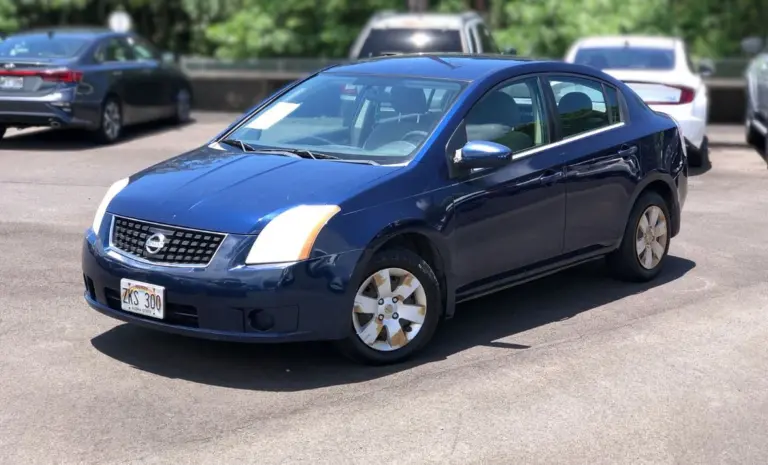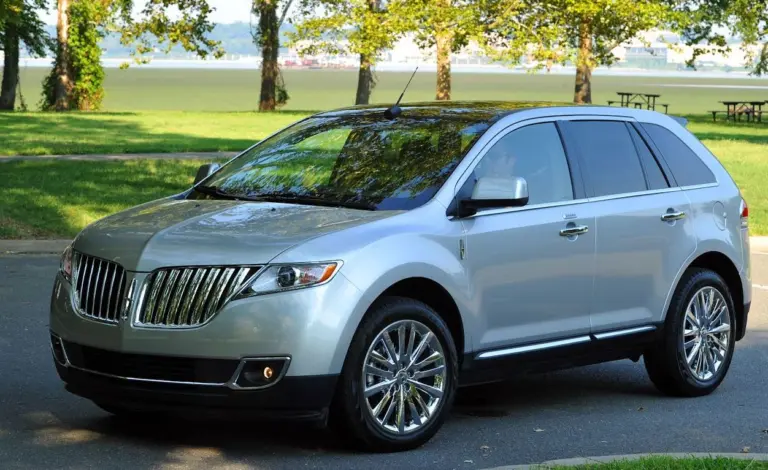These Are the Ford Edge Years to Avoid in 2025
The Ford Edge has been a popular midsize SUV since its introduction in 2007. However, like any vehicle, some model years have proven more reliable than others.
If you’re in the market for a used Ford Edge, it’s crucial to know which years to avoid and which ones offer the best value and reliability. Let’s examine the Ford Edge years to avoid and explore the common issues associated with these problematic models.
Ford Edge Years to Avoid
When considering a used Ford Edge, it’s essential to be aware of the model years that have shown the most problems. Based on consumer reports and reliability data, the following Ford Edge years are best avoided:
| Model Year | Major Issues |
|---|---|
| 2007 | Transmission failures, brake booster problems, engine stalling |
| 2008 | Transmission slipping, electrical issues, air conditioning malfunctions |
| 2011 | Electrical problems, MyFord Touch infotainment issues, sudden power loss |
| 2012 | Electrical issues, door ajar sensor problems, brake booster failures |
| 2013 | Transmission problems, electrical system failures, suspension issues |
| 2015 | Engine problems, sudden power loss, fuel system issues |
2007 and 2008 Ford Edge
The 2007 and 2008 model years marked the debut of the Ford Edge, and unfortunately, they came with significant teething problems. These early models experienced frequent transmission failures, with many owners reporting complete transmission breakdowns before reaching 100,000 miles. The 2007 model was particularly notorious for a clunking noise from the rear wheel area, which often indicated more serious underlying issues.
Additionally, both years suffered from brake booster failures, leading to reduced braking performance and increased stopping distances. Engine stalling was another common complaint, especially in the 2007 model, which could occur unexpectedly while driving, posing a serious safety risk.
2011-2013 Ford Edge
The 2011-2013 Ford Edge models, part of the second generation, introduced new problems while carrying over some issues from earlier years. The 2011 model year saw the introduction of the MyFord Touch infotainment system, which was plagued with glitches and user interface problems. Many owners reported frequent system crashes and unresponsive touchscreens.
A persistent issue across these years was the faulty door ajar sensor. This problem caused the door ajar light to stay on constantly, leading to battery drain and false alarms. The 2012 and 2013 models also experienced transmission problems, with reports of sudden jerking, hesitation, and in some cases, complete failure.
Electrical issues were rampant in these model years, affecting various vehicle systems from power windows to the central locking system. Some owners even reported sudden loss of power while driving, a dangerous situation that could lead to accidents.
2015 Ford Edge
The 2015 Ford Edge, while introducing a new design and features, came with its own set of problems. Engine issues were the primary concern, with numerous reports of engines dying while driving. Some owners experienced complete engine failure, requiring expensive replacements.
Fuel system problems were also common in the 2015 model, with reports of fuel leaks and malfunctioning fuel pumps. These issues not only affected performance but also posed potential safety hazards. Additionally, some 2015 Edge owners reported water leaks into the cabin and electrical system failures, further diminishing the vehicle’s reliability.
Common Problems Across these Model Years
While each model year had its specific issues, several problems were common across multiple years of the Ford Edge:
- Transmission Issues: Many Ford Edge models suffered from transmission problems, ranging from minor shifting irregularities to complete failures. These issues were particularly prevalent in the 2007, 2008, and 2013 models.
- Electrical System Failures: Electrical problems were a recurring theme, affecting various components such as the infotainment system, power windows, and door locks. The 2011-2013 models were especially prone to these issues.
- Engine Problems: Engine stalling, loss of power, and in some cases, complete engine failure were reported across multiple years, with the 2007 and 2015 models being the most affected.
- Brake System Issues: Brake booster failures and other brake-related problems were common, particularly in the earlier models (2007-2008) and the 2012 model year.
- Fuel System Defects: Some models, especially the 2015 Edge, experienced fuel system problems, including leaks and pump failures.
These recurring issues across multiple model years highlight the importance of thorough research and careful consideration when purchasing a used Ford Edge.
Reliable Ford Edge Model Years
While we’ve focused on the problematic years, it’s important to note that not all Ford Edge models have been troublesome. Several model years have proven to be more reliable and could be good options for used car buyers.
2009 and 2010 Ford Edge
The 2009 and 2010 model years of the Ford Edge showed significant improvements over their predecessors. These models addressed many of the transmission and engine issues that plagued the 2007 and 2008 versions. Owners reported fewer problems overall, and these years are generally considered more reliable within the first generation of the Edge.
The 2009 and 2010 models offered a more refined driving experience, improved fuel efficiency, and better build quality. While not entirely problem-free, these years represent a better value for used car shoppers looking for a first-generation Edge.
2014 Ford Edge
The 2014 Ford Edge stands out as one of the more reliable models in the second generation. This model year saw a significant reduction in reported problems compared to the troublesome 2011-2013 models. Ford had addressed many of the electrical and infotainment system issues by this point, resulting in a more dependable vehicle.
The 2014 Edge also benefited from improved transmission performance and fewer engine-related complaints. While it still had some minor issues, overall, it represented a marked improvement in reliability and customer satisfaction.
2018-2020 Ford Edge
The later years of the second generation, particularly the 2018-2020 models, have shown to be among the most reliable in the Edge lineup. These models benefited from several years of refinements and improvements to the design and technology.
The 2019 model, in particular, received high marks for reliability from various automotive rating agencies. These newer models offer improved fuel efficiency, enhanced safety features, and more refined infotainment systems. While they may come with a higher price tag in the used market, they often provide better long-term value due to their improved reliability.
Alternatives to the Ford Edge
If you’re considering a midsize SUV but are concerned about the reliability issues of certain Ford Edge models, there are several alternatives worth exploring:
- Honda CR-V: Known for its reliability, fuel efficiency, and spacious interior, the Honda CR-V is a popular alternative in the midsize SUV segment.
- Toyota RAV4: Another highly reliable option, the RAV4 offers a comfortable ride, good fuel economy, and Toyota’s reputation for longevity.
- Mazda CX-5: If you’re looking for a more engaging driving experience, the Mazda CX-5 offers sporty handling along with a well-designed interior and good reliability ratings.
- Subaru Outback: While technically a wagon, the Outback competes in the same space as midsize SUVs and offers standard all-wheel drive and excellent safety features.
- Hyundai Santa Fe: This midsize SUV has been improving in reliability and offers a generous warranty, making it an attractive alternative to the Ford Edge.
These alternatives may offer better reliability in certain model years and are worth considering if you’re in the market for a midsize SUV.
Frequently Asked Questions (F.A.Q)
Q1. What is the most reliable year for a Ford Edge?
Based on consumer reports and reliability data, the 2014 and 2018-2020 model years are considered the most reliable for the Ford Edge. These years saw fewer reported problems and higher customer satisfaction ratings.
Q2. Are there any Ford Edge years with transmission problems?
Yes, several Ford Edge years experienced transmission problems. The 2007, 2008, and 2013 models were particularly prone to transmission issues, including slipping, jerking, and in some cases, complete failure.
Q3. How long do Ford Edge engines typically last?
With proper maintenance, a Ford Edge engine can last between 150,000 to 200,000 miles. However, some owners of reliable model years have reported their engines lasting even longer, while problematic years may experience issues much earlier.
Q4. What are the most common problems with the Ford Edge?
The most common problems across various Ford Edge model years include transmission issues, electrical system failures, engine problems, brake system issues, and fuel system defects. The severity and frequency of these issues vary depending on the specific model year.
Q5. Is it worth buying a used Ford Edge?
Buying a used Ford Edge can be worth it if you choose a reliable model year and the vehicle has been well-maintained. The 2014 and 2018-2020 models are generally considered good choices. However, it’s crucial to have a pre-purchase inspection done by a qualified mechanic and check the vehicle’s history report before making a decision.
Wrapping Up
When considering a Ford Edge, it’s crucial to be aware of the model years that have shown the most problems. The 2007, 2008, 2011-2013, and 2015 models are generally considered the Ford Edge years to avoid due to various reliability issues. However, later models, particularly from 2014 onwards, have shown significant improvements in reliability and overall quality. Always conduct thorough research, consider alternatives, and if possible, opt for a professional inspection before purchasing a used Ford Edge to ensure you’re making a sound investment.







